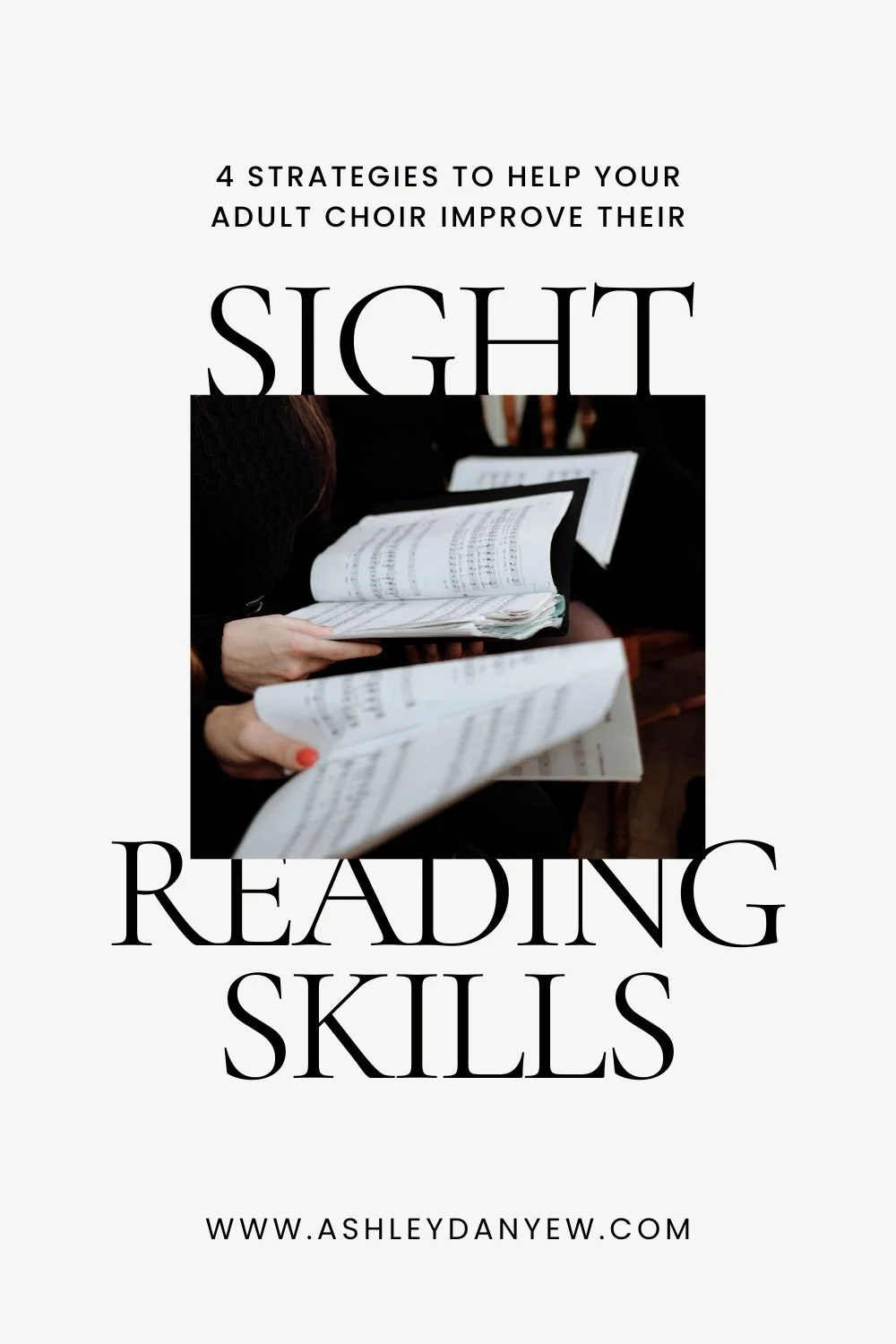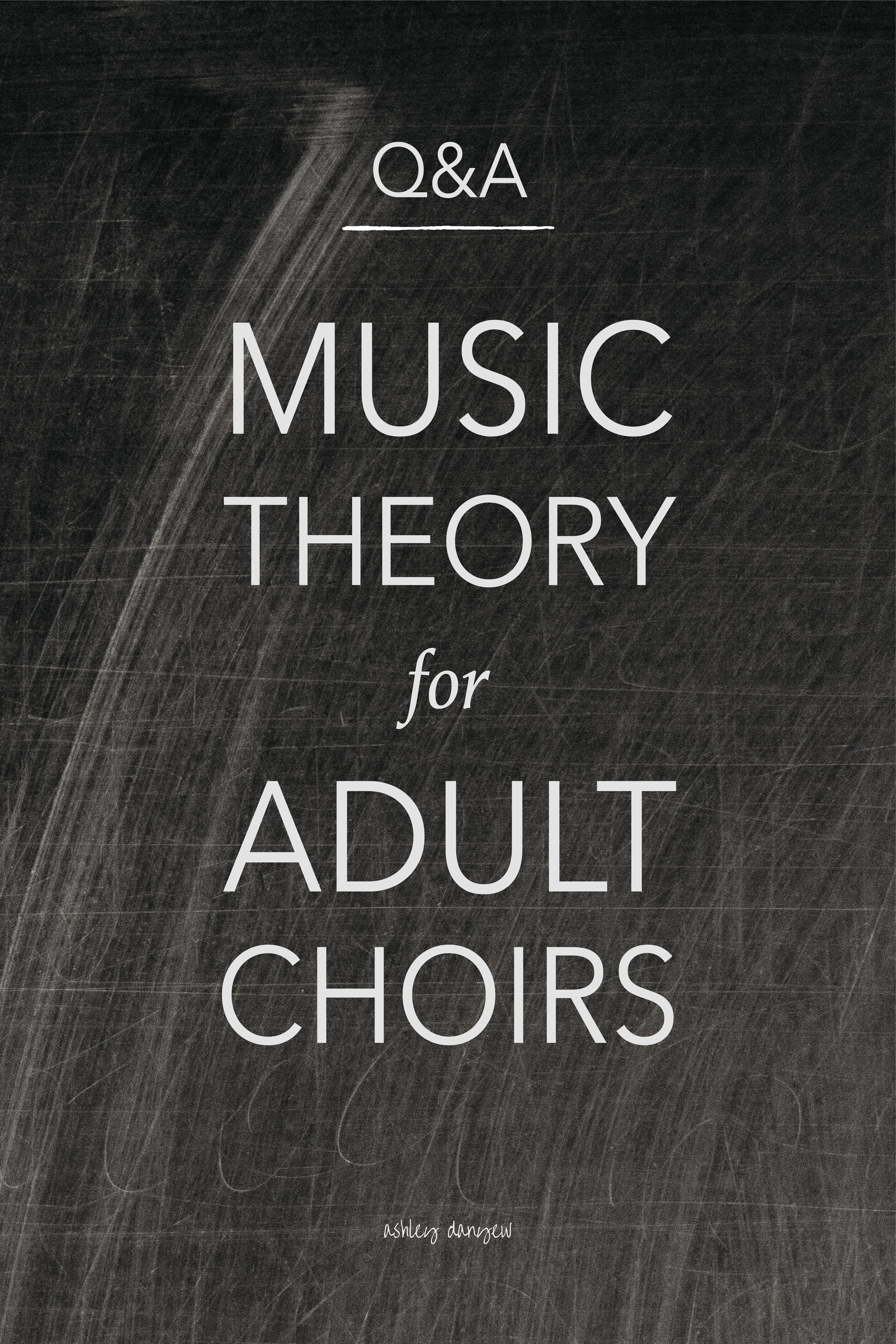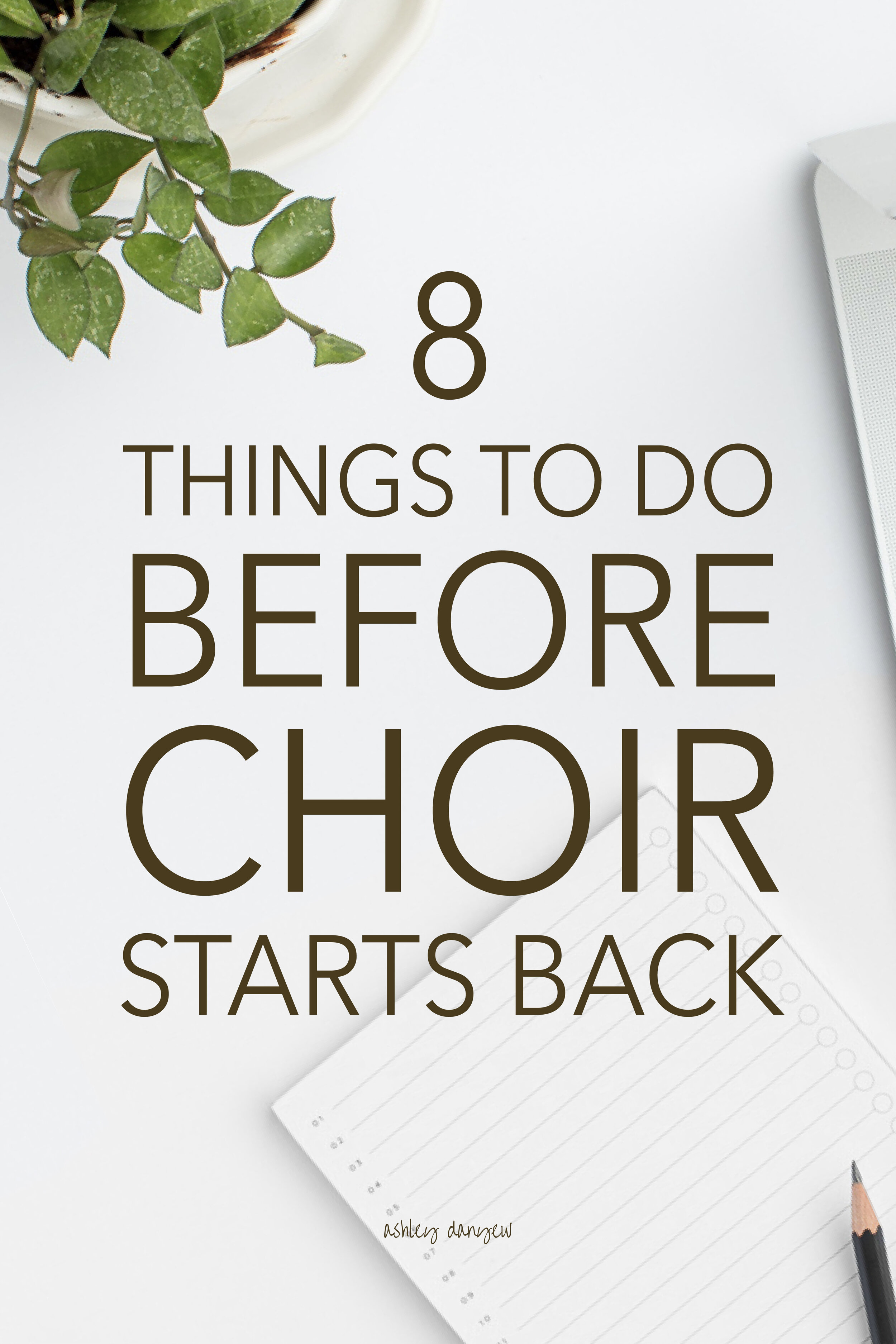These are strange times we’re living in.
Who would have thought that we’d find ourselves worshipping through a screen — together, but apart, that congregations would scatter, events would be canceled, and choirs would not be able to sing?
And yet, for the safety of our friends and neighbors and community members, here we are. Each in our own homes, flattening the COVID-19 curve, but missing the connection, the fellowship, the joy that comes with making music together.
And while we’re grateful for technology as a way to keep us connected during this time, we all know it’s not conducive to singing together.
Between internet lag times and audio compression levels, it’s just not feasible (though I know some of you have tried!).
But that doesn’t mean that we can’t find other ways of collaborating, continuing the work of ministry, and yes, even singing.
I’ve been thinking about creative ways you can connect (and sing!) with your choir virtually and today, I’m sharing a round-up of 19 ideas (for adult choirs and children’s choirs) that you can start using right away.
19 Ways to Connect (and Sing!) with Your Choir Virtually
*Disclosure: I get commissions for purchases made through links in this post.
1. Sing an anthem together via Zoom.
It can be done!
To do this, invite your choir members to a Zoom meeting. Have everyone mute themselves and share your computer audio (under Share Screen > Advanced). Play an accompaniment track or demo recording and have everyone sing along. For music, share works in the public domain via email or a Dropbox link or leave choir packets for pickup outside the church.
If you’ve purchased music from J.W. Pepper in the past 4 years (printed or digital), or purchase music now, and a digital copy is available from the publishers, Pepper will grant free digital access for your choir through June 30th. Click here for all the details.
A quick note about copyright: If you’re singing a copyrighted work, make sure you have permission (namely, a rehearsal license from CCLI or OneLicense) to record the accompaniment and share it with your choir members.
Related posts:
The Church Musician’s Guide to Copyright & Licensing
Free Music for Church Choirs
2. Organize a (simplified) virtual choir.
We’ve all seen the videos circulating around the internet and wondered, “Wouldn’t it be great if we could that with our choir?”
But then you learn about the time-consuming editing process, the software programs you’d have to learn, and the hours and hours you’d spend putting just one virtual choir video together and you begin to have second thoughts.
But don’t dismiss the idea just yet. There are simpler ways to create a virtual choir video (or even just an audio track) using free software programs and taking about 8-10 hours of your time.
Here are the basics:
To create an audio recording you’ll need:
A recorded accompaniment track for singers to use
A free audio-editing software like Audacity
To create a video recording you’ll also need:
A free video-chat tool like Zoom or Google Hangouts
A free video-editing software like iMovie
Here’s an easy-to-follow tutorial from church musician and director Sarah Bereza.
3. Communicate about worship planning and what's coming up.
This is a way to keep your choir members connected and feeling involved. Let them know what anthem will be used in worship on Sunday (either sung by section leaders or used as a solo piece). Share the music with them in advance, if you’re able, and encourage them to sing along at home as they watch the livestream or recording of the service.
Talk about plans for the future — changes you’re making to worship during this time or how you’re planning to celebrate Pentecost.
4. Ask for hymn recommendations.
Consider asking your choir members to make hymn recommendations to use in worship, perhaps at the beginning of the service as prelude music one week or as a virtual hymn-sing like some churches do during the summer months.
If not for worship, then consider sharing a favorite recording of a congregational hymn or choral hymn arrangement with the choir each week (take requests or submissions!).
5. Share public domain hymns and recordings.
Look for hymns in your hymnal that are in the public domain and share copies of the music and a simple recording for your choir members to sing along with at home during the week (or on a live Zoom call).
No licensing or special permissions needed if both the text and tune are in the public domain (published before 1924)!
6. Use the Acapella app.
The Acapella app is a multitrack recording tool that you can use right from your phone or tablet. This is a fun way to teach multiple parts of a hymn or anthem or encourage collaboration among your choir members!
If you work with a youth choir, this could be a fun way to create a virtual talent show or variety show. Encourage your choir members to collaborate with others for duets, trios, and quartets, to play instruments they have at home, to dress up and get their family members involved. Collect submissions of everyone’s videos and upload as private YouTube videos to share with everyone.
Another fun (free) video-sharing app? Flipgrid.
7. Share warm-ups or vocalises and piano tracks.
Consider sharing some of your favorite warm-ups to keep your choir singing during this time at home.
Send a simple audio file with you leading warm-ups from the piano (like you would do in rehearsal), and consider typing out a simple list so your singers can follow along.
This is a helpful and practical way to keep the voice in shape, maintain good breath support, and keep everyone engaged in music-making during this time apart.
Related post: 50 Awesome Warm-Ups for Church Choirs
8. Review good singing posture, good breath, vowels, and tone.
You know all those reminders you tend to give your choir on a weekly basis?
"Sit up tall."
“Take a deep and low breath before you sing.”
“Round the lips for this vowel.”
“Think about your tone here.”
Just because you’re not gathering in person doesn’t mean everything has to come to a halt. Use this time to remind your choir about their good choral-singing habits and practice them on their own at home.
9. Share inspirational recordings.
Now is a great time to get some extra listening in. Invite everyone to a video call and ask, “What have you been listening to lately?”
Consider sending one inspirational recording or video to your choir members each week (take submissions from your singers!) and share what you like about it and how it’s inspiring you this week.
10. Share prayer concerns and pray together.
This is an uncertain time, for all of us. Communal prayer IS something we can do easily through video-chat platforms, so take a few minutes to invite people to share what’s on their hearts and minds and pray together as a group.
Consider asking a different choir member to offer a spoken or written prayer for the group each week. If not shared live, include in your weekly choir email.
Related post: How to Pray with Your Choir
11. Send a weekly choir email.
If you’re not already in the practice of sending a weekly choir email, this might be a good time to start. Include a short note, perhaps a scripture verse or hymn lyric, a short prayer (perhaps one written by a fellow choir member), and maybe a link to an inspirational recording or anthem.
12. Send a handwritten card or note.
Sometimes it’s the little things that make the greatest impact, right? During this time of isolation, separation, and perhaps loneliness for some, consider writing a short note to each of your choir members.
Let them know you’re thinking of them, you miss being together, and you look forward to being back together and singing again when this is all over.
For Children’s Choirs…
For those of you who work with children’s choirs, here are a few more specific things you can do during this time to stay connected to your young singers and continue making music together:
13. Share your screen with a song visual or word chart and a track to sing along.
Just like with adults, you can still sing together using a video-chat platform like Zoom or Google Meet.
Mute all participants so they can sing along at home as you play a recorded accompaniment or track and sing.
If you have the materials (each in person or stored digitally on your computer), you might consider sharing your screen (and your computer audio for best sound) and displaying a song visual, word chart, or maybe even the sheet music so children can follow along.
14. Sing warm-ups and vocal exploration exercises.
Do your regular warm-up routine at the beginning of your virtual rehearsal, just like you’d do in person.
Again, have everyone muted. You won’t be able to hear them (unless you’re doing an activity where you invite one child to sing at a time), but having everyone muted creates an opportunity for everyone to sing and participate the whole time, which is helpful in virtual settings.
Consider included a vocalise or two, a few vocal exploration exercises (use the Whiteboard feature in Zoom to create your own!), and perhaps a rhythmic chant or tongue twister.
Related post: The Ultimate Guide to Children’s Choir Warm-Ups
15. Practice reading tonal and rhythm patterns and putting melody notes in order.
One thing that works really well in the virtual space? Reinforcing tonal and rhythm patterns.
Display a rhythm pattern on your screen (or simply hold up a rhythm pattern card in front of the camera) and have children chant it together (muted) while keeping a steady beat. Display a tonal pattern card, establish tonality (sing Do-Mi-Sol-Mi-Do in the given key), and have children sing the pattern together on a neutral syllable or with solfege (muted).
Display a series of rhythm cards (again, create this digitally using Google Slides or tape 2-4 rhythm pattern cards onto a piece of cardstock or posterboard) and have children chant the series together (muted) while keeping a steady beat together. You can do the same thing with tonal pattern cards.
You can also use a magnetic whiteboard (if you have one at home) to manipulate notes of a melody. Sing or play a 4-note melody and invite students to sing the pattern back with solfege or help you put the notes in the right order. If you don’t have a magnetic whiteboard at home, you can create a digital version on Google Slides to display on your screen.
Related posts:
How to Teach Solfege in Children’s Choir
36 Ways to Use Rhythm Pattern Cards in Your Teaching
Related products:
Rhythm Pattern Cards
Includes: six sets of printable rhythm pattern cards using quarter notes, half notes, eighth notes, sixteenth notes, and quarter rests (4/4 and 3/4). 192 cards.
Tonal & Rhythm Pattern Cards (Younger Elementary)
Includes: two sets of printable tonal pattern cards (major and minor) and two sets of printable rhythm pattern cards (4/4 and 3/4). 152 cards.
Free Rhythm Pattern Cards
Includes: A single set of printable rhythm pattern cards using quarter notes, half notes, eighth notes, and quarter rests (4/4). 16 cards.
Tonal & Rhythm Pattern Cards (Older Elementary)
Includes: two sets of printable tonal pattern cards (major and minor) and four sets of printable rhythm pattern cards (4/4 and 3/4). 216 cards.
16. Do a movement activity and have them mirror your motions.
This is probably very similar to an activity you’d do in rehearsal if you were all together.
To do this virtually, share your computer audio using a video-chat platform like Zoom and play a track with a steady beat. Then demonstrate a variety of movements and have the children mirror you. Make sure your view is set to “Gallery View” so you can see each child.
Related post: 10 Movement Activities for Children’s Choir
17. Review good singing posture, good breath, smiling, vowels, and matching pitch.
Just like with adults, these are all good singing skills and habits that you can reinforce and remind children about, even during this time apart.
Remind them to stand tall with their feet slightly apart. Do some simple breathing exercises. Remind them to smile as they sing. Review different vowel sounds (bonus points if you have a chart or visual you can use!). Practice matching pitch one at a time with a simple hello song or call-and-response song.
Keep everyone muted so they can all sing along the whole time and invite one child to sing for the group at a time. (You can manually mute/unmute children in the Participants panel.)
Related posts:
Breathing Exercises for Choirs of All Ages
The Value of Teaching Vowels to Your Children’s Choir
40 Call-and-Reponse Songs and Games for Children’s Choir
18. Send a postcard they can fill out with words to a song or listening log for a day and send back.
Children love getting mail, right? This is a fun way to surprise them at home and give them a small action to do during the week.
Review an anthem you were working on earlier this year by asking them to fill in the blanks with the song text. Review a scripture verse you were learning together by providing the reference and asking them to look it up in their Bible at home and write in the verse.
Outline different parts of the day and ask them to keep a listening log of music they hear throughout the day — from songs on the radio to songs they sing with their teachers to songs they find themselves singing on a walk to songs their parents sing at bedtime. This is a wonderful way to get a glimpse into the everyday music-making of your children!
19. Share your screen with a worksheet or written activity they can do together.
Choose a worksheet or written activity — something you might distribute at the beginning or end of rehearsal — to do together via a live video call.
Email the worksheet or activity page to parents ahead of time so they can print it at home and display a digital version on your screen for everyone to see.
Explain how to complete the worksheet and perhaps demonstrate on your screen using annotation tools. Then, give everyone time to complete the worksheet on their own and answer questions, as needed.
These are challenging times, but don’t let that keep you from singing and making music with your choirs. Join your hearts and voices together in whatever ways you can because the world needs music now more than ever.
I’d love to hear from you: How are you staying connected to and making music with your choir during this time?










































